



Recommendations for restaurants near Portas do Sol Viewpoint Viewpoint with the highest ratings on Tripadvisor.
- Quiosque Lisboa – Sé: This restaurant is located at Largo da Se, 0 km from Lisbon Cathedral. It serves Bar, Cafe, Pub, and Street Food cuisine
- Tasca da Sé: This restaurant is located at Rua Augusto Rosa 62, 0 km from Lisbon Cathedral. It serves Seafood, Mediterranean, European, and Portuguese cuisine
- Restaurante da Sé: This restaurant is located at Cruzes da Sé 31A, Near To Cathedral Sé Da Lisboa, 0.1 km from Lisbon Cathedral. It serves Italian, European, and Portuguese cuisine
- Restaurante Estrela da Se: This restaurant is located at Largo de Santo Antonio da Se, 0.1 km from Lisbon Cathedral. It serves Mediterranean, European, and Portuguese cuisine
Touch each icon to get the information.
How to get there
To get to the Cathedral of Lisbon, you have several options:
1. Bus: You can take bus number 737, which will drop you off near the Cathedral. Here’s a step-by-step guide to get to the Cathedral of Lisbon from the bus stop:
– Take bus 737 and get off at the “Rua dos Lagares” or “Rua de São Tomé” stop.
– From the stop, head east on Rua dos Lagares or Rua de São Tomé.
– Continue straight on Rua dos Lagares until you reach Rua de Santa Luzia.
– Turn left onto Rua de Santa Luzia and continue walking.
– You will see signs that will guide you to the Cathedral.
2. Bus and Tram: Another option is to take the bus to a stop where you can catch a tram and then use the tram to reach the Cathedral. Here are the possible combinations:
– Bus 737: You can take bus 737 to the “Rua dos Lagares” or “Rua de São Tomé” stop. From there, walk to the nearest tram stop and take Tram 28E towards Martim Moniz. Get off at the Miradouro de santa Luzia stop, and you will find the Cathedral just a short walk away.
– Bus 734: If you are in another part of the city, you can take bus 734 to the “Rua dos Anjos” stop. From there, walk to the nearest tram stop and take Tram 28E towards Martim Moniz. Get off at the viewpoint Santa luzia stop, and you will find the viewpoint just a short walk away.
To get to the Cathedral of Lisbon in Lisbon, I advise using the metro to Martim Moniz station and then taking the tram directly to the viewpoint. However, I can suggest walking to the viewpoint as well, as the tram stop often has long queues with many tourists and locals waiting. The walking distance from Martim Moniz Square to the Cathedral of Lisbon is approximately 1 kilometer (0.6 miles) and takes around 10-15 minutes. Here’s a revised version of the instructions:
1. Metro and Tram:
– Take the metro to Martim Moniz station using the appropriate metro line for your starting point.
– Exit the metro station and look for the tram stop.
– Take Tram 28E, which operates along a scenic route through the city.
– Stay on the tram until you reach the Cathedral of Lisbon stop, which is the closest stop to the viewpoint.
– From there, follow the signs or ask for directions to the Cathedral of Lisbon.
2. Walking:
– Take the metro to Martim Moniz station using the appropriate metro line for your starting point.
– Exit the metro station and head southeast on Martim Moniz Square.
– Continue straight on Rua da Palma.
– After a short distance, turn right onto Largo das Portas do Sol.
– Continue walking uphill on Rua São Tomé until you reach Cathedral of Lisbon.
– The walking distance from Martim Moniz Square to the Cathedral of Lisbon is approximately 1 kilometer (0.6 miles) and takes around 10-15 minutes.
Please note that walking allows you to avoid potential crowds and long queues at the tram stop, providing a more leisurely and flexible experience.
Here are detailed instructions on how to reach the Cathedral by metro from any point on the three main metro lines, indicating the scenarios and necessary transfers:
Scenario 1: Blue Line
From any point on the Blue Line, take the metro in the direction of Santa Apolónia.
Transfer at Baixa-Chiado station to the green line in the direction of Cais do Sodré.
Continue on the green line and get off at Martim Moniz station.
Scenario 2: Green Line
From any point on the green line, take the metro in the direction of Cais do Sodré.
Get off at Martim Moniz station.
Scenario 3: Yellow Line
From any point on the yellow line, take the metro in the direction of Rato.
Transfer at Baixa-Chiado station to the green line in the direction of Cais do Sodré.
Continue on the green line and get off at Martim Moniz station.
Once at Martim Moniz station, I recommend walking to the Cathedral instead of waiting for the tram due to possible queues. Follow the instructions above to walk from Martim Moniz to the Cathedral.
I hope these instructions are clear and will help you to reach the Cathedral from any point on the blue, green, and yellow metro lines in Lisbon.

Above in the photo gallery you will find the map in real size.
Here are the complete instructions for the three scenarios from the Santa Apolónia, Rossio, and Cais do Sodré stations to the Cathedral.
Scenario 1: Santa Apolónia Line
If you are at any point on the line heading towards Santa Apolónia, take the train to Santa Apolónia station.
Upon arrival at Santa Apolónia station, exit the station and locate the nearest bus stop.
Take bus 734 towards Graça.
Get off the bus at Largo das Portas do Sol.
From there, walk approximately 10 minutes to the Cathedral. Follow the signs and enjoy the journey.
Scenario 2: Rossio Line
If you are at any point on the line heading towards Rossio, take the train to Rossio station.
Upon arrival at Rossio station, exit the station and walk towards Martim Moniz Square.
From Martim Moniz Square, you have the option to take tram 12E or tram 28E.
Tram 12E: Take tram 12E towards Graça.
Tram 28E: Take tram 28E towards Graça.
Get off the tram at Largo das Portas do Sol.
From there, walk about 10 minutes to the Cathedral. Follow the signs and enjoy the panoramic views.
Scenario 3: Cais do Sodré Line
If you are at any point on the line heading towards Cais do Sodré, take the train to Cais do Sodré station.
Upon arrival at Cais do Sodré station, exit the station and locate the nearest bus stop.
Take bus 706 towards Marvila.
Get off the bus at Largo das Portas do Sol.
From there, walk about 10 minutes to the Cathedral. Follow the signs.
I hope these instructions are clear and help you reach the Cathedral from each of the three main stations in Lisbon. Remember to check train, tram, and bus schedules to plan your journey properly.
Explore the beauty of Lisbon Cathedral with ease.
Just click on the “Take me to Lisbon Cathedral” button below, and it will automatically open the Google Maps application on your mobile device or computer.
The starting location will already be configured, so you just need to follow the step-by-step directions provided by Google Maps. Enjoy a hassle-free stroll as you’re guided through the best routes to reach this iconic square in Lisbon. Exploring the city couldn’t be easier with the help of Google Maps.”
Please make sure to add the appropriate button on your website with the necessary functionality to open the Google Maps application with the preconfigured location.
Once you arrive at the site, listen to a brief explanation of the history of the place.
- Audio in English
- Audio en français
- Audio en Español
- Audio auf Deutsch





Choose Your Language.
- Reading in English
- Lire en Français
- Lectura en Español
- Lesen auf Deutsch
The Sé de Lisboa is one of the oldest churches in the city and has a rich history dating back to its construction in the 12th century. It was built on the same site where there was previously a mosque during the Muslim occupation of the region.
The construction of the cathedral began in 1147, shortly after Christians reconquered the city of Lisbon from the Muslims. However, over the centuries, the cathedral has undergone numerous renovations and modifications, resulting in a blend of architectural styles.
When you observe the cathedral’s facade, you will notice the influence of Romanesque style, with its rounded arches and a solid and robust appearance. However, you will also see Gothic elements, especially in the main portal, where sculptures of various saints and an impressive rose window are located.
One of the most prominent features of the cathedral is its interior. Upon entering, you will encounter a main nave with a basilica floor plan, adorned with beautiful columns and Gothic ribbed vaults. Along the walls, you will appreciate religious paintings and typical Portuguese azulejos, depicting biblical scenes and saints.
Furthermore, you will be captivated by the cathedral’s treasury, which houses a collection of sacred art and precious religious objects. Here, you will find reliquaries, chalices, crosses, and liturgical vestments, some of which date back to the 14th and 15th centuries.
Another point of interest within the cathedral is the Main Chapel, where you can admire an impressive altar carved in golden wood, with intricate details and religious figures. The chapel also houses the tomb of Bartolomeu Dias, a famous 15th-century Portuguese navigator.
The Cathedral of Lisbon has witnessed numerous historical events throughout the years, including devastating earthquakes, renovations, and restorations. Each of these events has left its mark on the structure and design of the cathedral, making it a true testament to the history of Lisbon and Portugal as a whole.
La Sé de Lisbonne est l’une des plus anciennes églises de la ville et possède une riche histoire remontant à sa construction au XIIe siècle. Elle a été érigée à l’emplacement même où se trouvait autrefois une mosquée pendant l’occupation musulmane de la région.
La construction de la cathédrale a commencé en 1147, peu de temps après que les Chrétiens aient reconquis la ville de Lisbonne aux Musulmans. Cependant, au fil des siècles, la cathédrale a subi de nombreuses rénovations et modifications, ce qui a donné lieu à un mélange de styles architecturaux.
En observant la façade de la cathédrale, vous remarquerez l’influence du style roman, avec ses arcs arrondis et son apparence solide et robuste. Cependant, vous verrez également des éléments gothiques, notamment sur le portail principal, où se trouvent des sculptures de plusieurs saints et une impressionnante rosace.
L’un des aspects les plus remarquables de la cathédrale est son intérieur. En entrant, vous vous retrouverez dans une nef principale de plan basilical, avec de magnifiques colonnes et des voûtes d’ogives gothiques. Tout le long des murs, vous pourrez admirer des peintures religieuses et des azulejos typiques du Portugal, représentant des scènes bibliques et des saints.
De plus, vous serez intrigués par le trésor de la cathédrale, qui abrite une collection d’art sacré et d’objets religieux précieux. Vous y trouverez des reliquaires, des calices, des croix et des vêtements liturgiques, dont certains datent des XIVe et XVe siècles.
Un autre lieu d’intérêt à l’intérieur de la cathédrale est la Chapelle principale, où vous pourrez admirer un impressionnant autel en bois doré, avec des détails complexes et des figures religieuses. La chapelle abrite également la tombe de Bartolomeu Dias, un célèbre navigateur portugais du XVe siècle.
La Cathédrale de Lisbonne a été le témoin de nombreux événements historiques au fil des ans, notamment des tremblements de terre dévastateurs, des rénovations et des restaurations. Chacun de ces événements a laissé sa marque sur la structure et le design de la cathédrale, en faisant un véritable témoignage de l’histoire de Lisbonne et du Portugal en général.
La Sé de Lisboa es una de las iglesias más antiguas de la ciudad y tiene una rica historia que se remonta a su construcción en el siglo XII. Fue construida en el mismo lugar donde anteriormente había una mezquita durante la ocupación musulmana de la región.
La construcción de la catedral comenzó en 1147, poco después de que los cristianos reconquistaran la ciudad de Lisboa de los musulmanes. Sin embargo, a lo largo de los siglos, la catedral ha sufrido numerosas renovaciones y modificaciones, lo que ha dado lugar a una mezcla de estilos arquitectónicos.
Al observar la fachada de la catedral, podrán notar la influencia del estilo románico, con sus arcos redondeados y una apariencia sólida y robusta. Sin embargo, también verán elementos góticos, especialmente en el portal principal, donde se encuentran esculturas de varios santos y una impresionante rosácea.
Una de las características más destacadas de la catedral es su interior. Al entrar, se encontrarán con una nave principal de planta basilical, con hermosas columnas y bóvedas de crucería gótica. A lo largo de las paredes, podrán apreciar pinturas religiosas y azulejos portugueses típicos, que representan escenas bíblicas y santos.
Además, les llamará la atención el tesoro de la catedral, que alberga una colección de arte sacro y objetos religiosos preciosos. Aquí encontrarán relicarios, cálices, cruces y vestimentas litúrgicas, algunos de los cuales datan de los siglos XIV y XV.
Otro lugar de interés dentro de la catedral es la Capilla Mayor, donde podrán admirar un impresionante altar tallado en madera dorada, con detalles intrincados y figuras religiosas. La capilla también alberga la tumba de Bartolomeu Dias, un famoso navegante portugués del siglo XV.
La Catedral de Lisboa ha sido testigo de numerosos eventos históricos a lo largo de los años, incluyendo terremotos devastadores, remodelaciones y restauraciones. Cada uno de estos eventos ha dejado su huella en la estructura y el diseño de la catedral, convirtiéndola en un verdadero testimonio de la historia de Lisboa y de Portugal en general.
Die Kathedrale von Lissabon, auch bekannt als Sé de Lisboa, ist eine der ältesten Kirchen der Stadt und hat eine reiche Geschichte, die bis zu ihrer Errichtung im 12. Jahrhundert zurückreicht. Sie wurde an derselben Stelle erbaut, an der zuvor eine Moschee während der muslimischen Besetzung der Region stand.
Der Bau der Kathedrale begann im Jahr 1147, kurz nachdem die Christen die Stadt Lissabon von den Muslimen zurückerobert hatten. Im Laufe der Jahrhunderte hat die Kathedrale jedoch zahlreiche Renovierungen und Modifikationen erfahren, was zu einer Mischung aus architektonischen Stilen geführt hat.
Bei der Betrachtung der Fassade der Kathedrale werden Sie den Einfluss des romanischen Stils bemerken, mit seinen Rundbögen und einem soliden, robusten Erscheinungsbild. Sie werden jedoch auch gotische Elemente sehen, insbesondere im Hauptportal, wo sich Skulpturen verschiedener Heiliger und ein beeindruckendes Rosettenfenster befinden.
Eine der herausragenden Merkmale der Kathedrale ist ihr Inneres. Beim Betreten werden Sie auf ein Hauptkirchenschiff mit einer basilikalen Grundrissform stoßen, geschmückt mit wunderschönen Säulen und gotischen Kreuzrippengewölben. An den Wänden entlang werden Sie religiöse Gemälde und typisch portugiesische Azulejos bewundern können, die biblische Szenen und Heilige darstellen.
Außerdem wird Ihre Aufmerksamkeit auf den Schatz der Kathedrale gelenkt, der eine Sammlung sakraler Kunst und wertvoller religiöser Objekte beherbergt. Hier finden Sie Reliquiare, Kelche, Kreuze und liturgische Gewänder, von denen einige aus dem 14. und 15. Jahrhundert stammen.
Ein weiterer interessanter Ort innerhalb der Kathedrale ist die Hauptkapelle, in der Sie einen beeindruckenden Altar aus vergoldetem Holz mit kunstvollen Details und religiösen Figuren bewundern können. Die Kapelle beherbergt auch das Grab von Bartolomeu Dias, einem berühmten portugiesischen Seefahrer des 15. Jahrhunderts.
Die Kathedrale von Lissabon hat im Laufe der Jahre zahlreiche historische Ereignisse miterlebt, darunter verheerende Erdbeben, Renovierungen und Restaurierungen. Jedes dieser Ereignisse hat seine Spuren in der Struktur und dem Design der Kathedrale hinterlassen und sie zu einem wahren Zeugnis der Geschichte von Lissabon und Portugal im Allgemeinen gemacht.

Closest Nearby Destination: Discover the Next Stop from Here
Enchanting São Jorge Castle: Unveiling Lisbon’s Majestic Fortress
The distance between Lisbon Cathedral and São Jorge Castle is approximately 550 meters.
Related products
-

Monument To The Discoveries: Celebrating Portugal’s Age Of Exploration And Adventure
- Lisboa, Architecture, Historic Sites, Historical Monuments, Landmarks, Museums and Art Galleries, Places
-
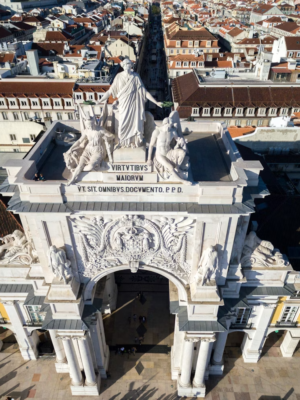
Arco de Rua Augusta (Rua Augusta Arch) – Lisbon’s Triumphal Arch
-

Cascais: Coastal Charm and Portuguese Treasure
-
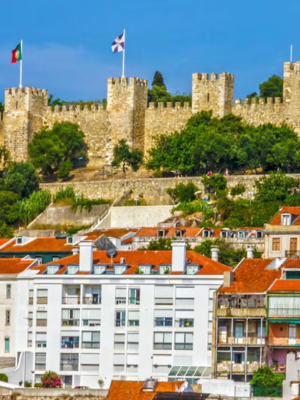
Enchanting São Jorge Castle: Unveiling Lisbon’s Majestic Fortress
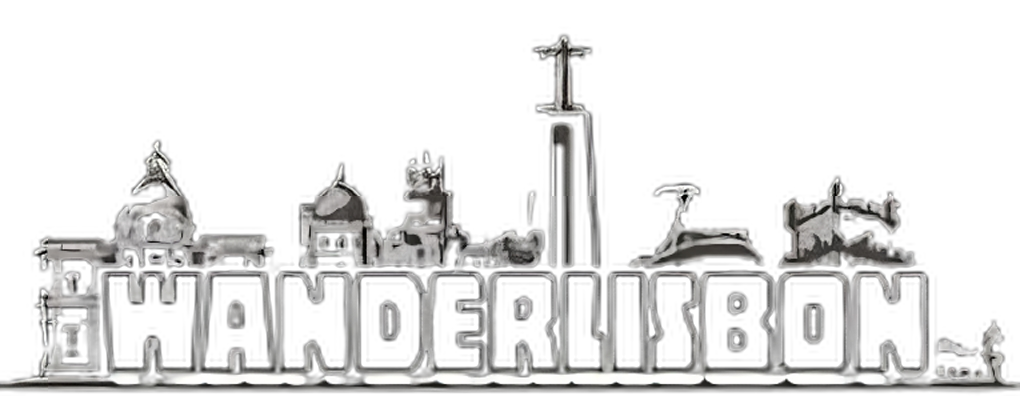
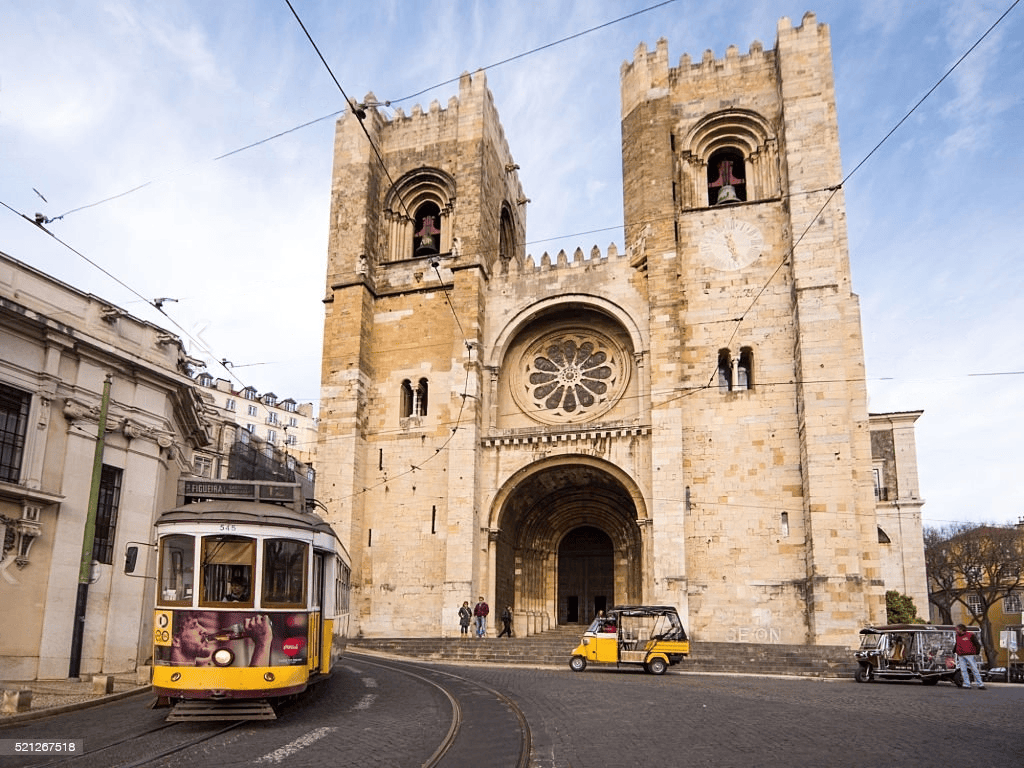
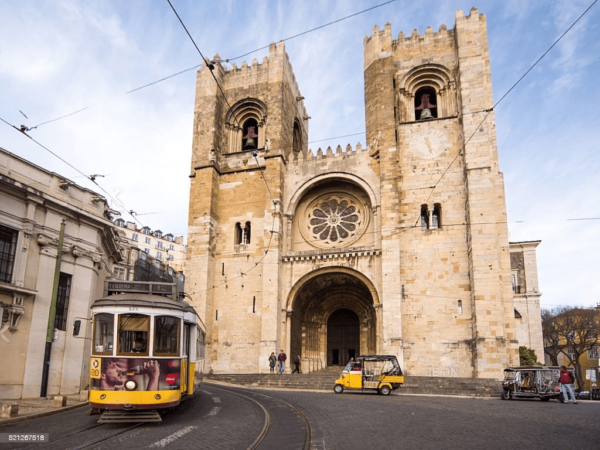




Reviews
There are no reviews yet.